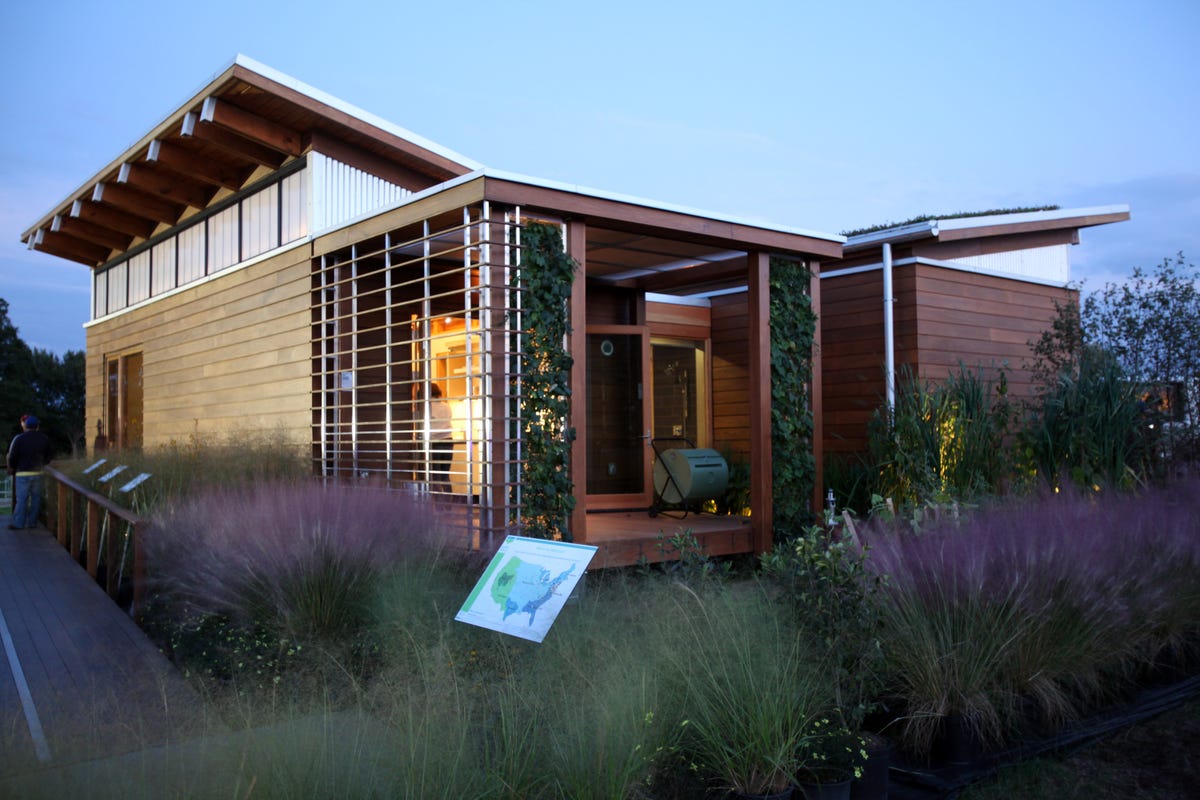University of Maryland grabs gold in Solar Decathlon (photos)
The team from the University of Maryland wins the 2011 Solar Decathlon with a building that focuses on both energy and water efficiency.

Water Shed
The student team from the University of Maryland drew inspiration from the Chesapeake Bay by building a home that focuses on energy and water conservation. It tries to re-create the bay's ecosystem with the building itself by capturing storm water and filtering it with native vegetation on site. During a week in Washington, D.C., the house was able to produce more energy than it consumed with its solar photovoltaic and solar hot-water panels.
The Department of Energy-sponsored Solar Decathlon is held every two years in Washington as a competition among 20 university student teams to build the most compelling solar-powered house. This year, there was an increased focus on affordability by limiting teams to $250,000 in construction costs.
Chu checks out Maryland
Energy Secretary Steven Chu takes a look at the solar hot-water collectors at the University of Maryland's WaterShed house during the final stages of the Solar Decathlon competition. During a speech on Saturday, Chu said that the students in the competition were leaders in a global competition around clean-energy technologies. "It's not enough for our country to invent clean-energy technologies--we have to make them and use them too," Chu said during his speech.
Liquid dessicant
Here is a close-up shot of a clever feature in the WaterShed house to reduce the cooling needs. The house features an indoor waterfall using a high-saline solution which absorbs water from the air. By lowering the humidity, the house's air conditioning units don't need to work as hard, saving energy.
Integrated garden
A shot from inside the University of Maryland house shows how student teams integrated planting with the interior space. The bathroom in Team Maryland's house served as a junction between two halves which have slanted roofs and direct water to water filtering and storage system. Rainwater as well as gray water from sinks and a shower are filtered and then used to irrigate the native plants.
Overview shot
This shot shows the "Solar village" which was created on the Potomac River end of the National Mall. Houses are open to the public for several days, with some drawing lines to get inside.
For more pictures from the Solar Decathlon 2011, see here.

